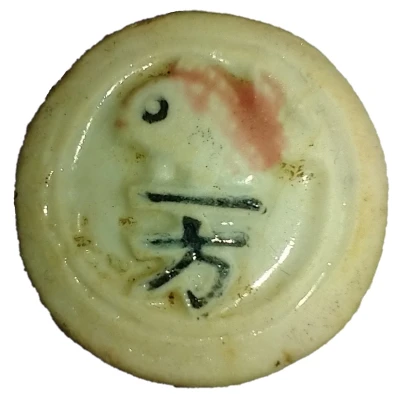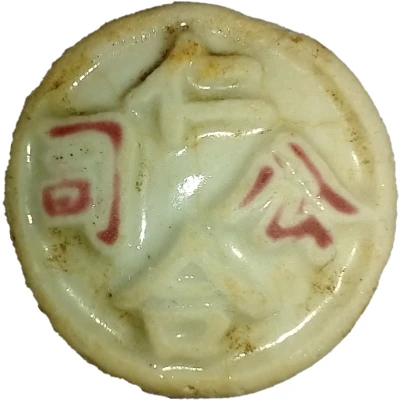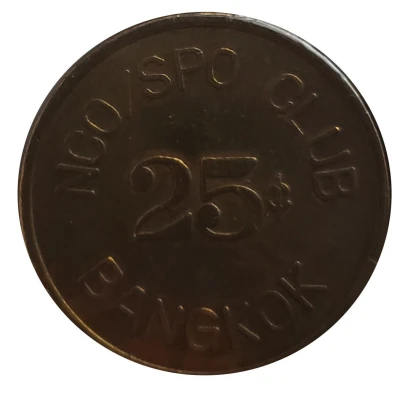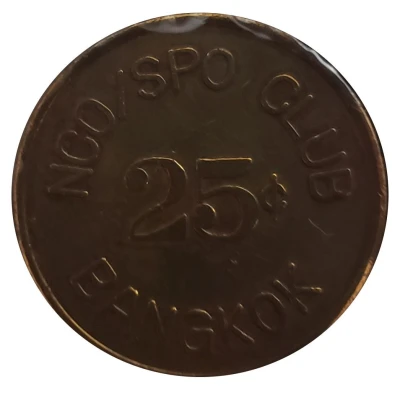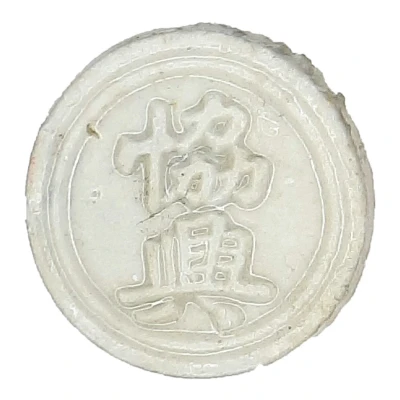


1 Fuang - Siam Gambling Token Xie Xing ND
| Porcelain | 2.1 g | 19 mm |
| Location | Thailand |
|---|---|
| Type | Utility items › Counter tokens |
| Years | 1800-1875 |
| Value | 1 Fuang (⅛) |
| Composition | Porcelain |
| Weight | 2.1 g |
| Diameter | 19 mm |
| Thickness | 4 mm |
| Shape | Round |
| Technique | Coloured |
| Orientation | Variable alignment ↺ |
| Demonetized | Yes |
| Updated | 2024-11-14 |
| Numista | N#410338 |
|---|---|
| Rarity index | 97% |
Reverse
Denomination writes into the field, painted in blue on white porcelain background. Glazed. Showing the burnt-in word "fang" (Chinese character) or "Fuang" (referring to the Siamese currency).
Script: Chinese
Lettering: 方
Translation: 1 Fuang, (1/8 baht)
Edge
Smooth, tapers towards obverse.
Comment
Porcelain gambling coins or tokens were in use for a large part of the nineteenth century in the gambling houses (hong) run by the Chinese in Siam (called Thailand today). According to one of the major sources of information - the Dutch Consul, P.S. Hamel, who donated this collection in 1887 - the first porcelain gambling coins were issued in 1821. These coins played an important role in a simple gambling game known as fantan. Although to begin with the gambling coins were used solely as tokens or counters, after some time the gambling-house owners were permitted to put the pees in circulation as small change in their own immediate surroundings. They were, it is true, obliged to exchange the pees for gold or silver money when required to do so. In 1875 King Rama IV issued a decree forbidding the further use of the gambling coins as change, in order to facilitate the introduction of newly minted small copper coinage. Nonetheless, for a long time after this the porcelain coins continued to circulate as small change. In the nineteenth century innumerable different shapes and types of porcelain coins were made to order in China, and then put into circulation in Siam. According to recent estimates, some eight thousand different pees were in circulation. This large quantity is partly connected with the fact that when counterfeits appeared, the gambling-house owners were legally obliged to call in all the original gambling coins of that type. The number of original examples of a particular type could vary between one or two thousand, to six thousand, and even to ten thousand pieces. Different images, or texts, were added to the reverse of the coins. These additions lent a somewhat more profound (symbolic), luck-bringing meaning to the coins. The texts appearing most frequently include the names of the gambling houses that circulated the pees. In most examples the reverse bears Chinese characters indicating money values corresponding to the Siamese monetary system of that period. Thus the character 'qian' represented the value of one salung, while the character 'fang' stood for the value of one fuang.
